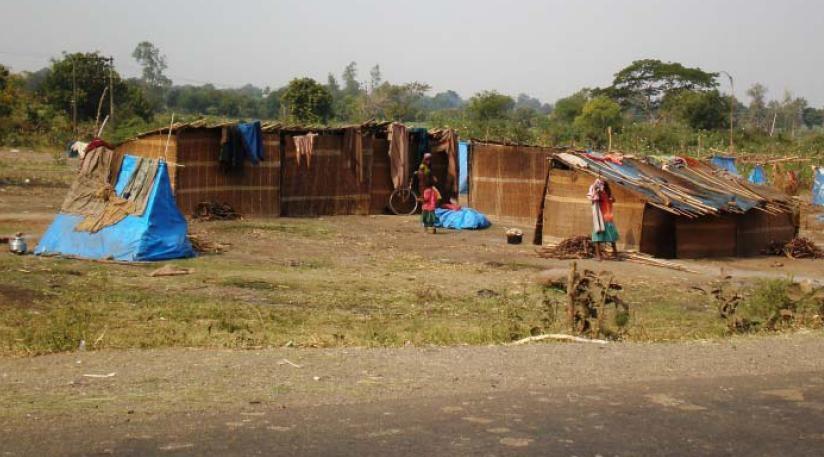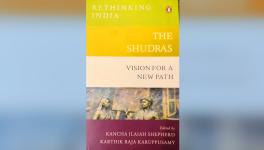Why Tribal Communities May Vote Against BJP in Gujarat

Despite Scheduled Tribes making up a substantial 14.8% of population in Gujarat, they have remained one of the neglected social segments in the state. According to the Ministry of Tribal Affairs Annual Report 2016-2017, more than 35% of Scheduled Tribes in Gujarat belonging to Bhil, Charan, Choudhuri, Chodhara, Dhodia, Gamit, Gond, Rabari and other tribes were below the poverty line during 2011-12 (last available official data). Literacy rate among tribals is 15.5% lower than the state average. Tribal youth in the State are facing dire unemployment. Also reportedly, three surveys found 94 percent of children from tribal regions in the state were stunted or undernourished.
The upcoming Assembly elections in December have taken a much more caste-centric character in contrast to earlier elections. The all important question for both Congress and BJP is: which way are tribals going to go? Out of total 182 seats, 27 are reserved for ST candidates. BJP was able to win 11 ST reserved constituencies in previous assembly elections. Previous elections to Assembly have seen a shrinking difference in the vote shares between the BJP and the Congress along with steady fall in number of seats held by BJP since 2002.
Historically, the relationship between BJP and various tribal communities has always remained in conflict. In fact, the first major communal violence in BJP regime was against tribal people in Gujarat. In 1999, affiliates of BJP were accused of violence on the tribes who have chosen Christianity as their religion in the Dangs district which eventually led to the nationwide protests calling for the dismissal of the BJP-led state government. It has been reported that the BJP progenitor Rashtriya Swayamsevak Sangh and its cultural affiliates have accelerated their groundwork since last December in the tribal regions of Gujarat.
Recent events show intermittent outbursts of tribal angst in southern Gujarat districts, which present a study in contrast. Highly industrialized and prosperous coastal regions are backed up by an extremely poor tribal hinterland. This chasm has caused many of the protests against land acquisition, joblessness and poverty.
Recently, Narendra Modi’s proposed extravagant projects such as Mumbai-Ahmedabad bullet train and the Mumbai-Vadodara expressway were opposed by tribals and farmers in Maharashtra and Gujarat. The rail line passes through the tribal belts of Navsari and Valsad districts of Gujarat.
While anti-government protests by tribal organisations were reported with the row over reservation notifications, members of Bhilistan Tiger Sena, affiliated to Janata Dal (United) have been demanding that the Adivasi belt along Gujarat’s eastern border be declared a separate state named as Bhilistan. On the other hand, on October 26, in protest against the BJP government’s failure to crack down on Srisol factory which had allegedly been contaminating groundwater for the last three years in Valsad district, Adivasi voters from Sonwada and Rola villages have called for a boycott of elections.
Recent reports by Comptroller and Auditor General of India (CAG) has revealed shocking details of projects taken up in the tribal regions of Gujarat. In the building of 4 High-Level canals (HLC) by the water resources department which are located in hilly areas of Mahisagar, Panchmahal, Surat and Bharuch districts, inhabited by tribals, the canals have reached only about 4% of the target. In a performance audit conducted by the CAG on skill development between years 2010 and 2015, it was found that Vocational Training Centres (VTC) set up under the Tribal Sub Plan which were meant to provide training to 44, 354 tribal youth,could fulfill only 35% of the target.
Another serious concern raised by tribal leaders is about the number of their community people languishing in jails in the state. At the end of 2015, 18% of undertrial prisoners were STs, second only to Muslims, whose share of undertrial prisoners was 22%. Similarly, among convicted prisoners, 22% belonged to STs, according to NCRB statistics.
A number of resistance movements by tribals against BJP government have taken place under the leadership of various organisations. Back in 2015, when Soolpaneshwar wildlife sanctuary and the area of about seven kilometers radius surrounding it was declared as eco-sensitive zone, thousands of Adivasis from 121 villages in South Gujarat participated in a massive protest rally against the central government’s decision.
An Adivasi Convention has been called by a number of tribal groups on November 18 at Vyra in Tapti district, to decide on the political action of the tribal communities in the context of the coming elections. Whichever way you look at it, tribal voters are set to chart a different path in the run-up to the election.
Get the latest reports & analysis with people's perspective on Protests, movements & deep analytical videos, discussions of the current affairs in your Telegram app. Subscribe to NewsClick's Telegram channel & get Real-Time updates on stories, as they get published on our website.























